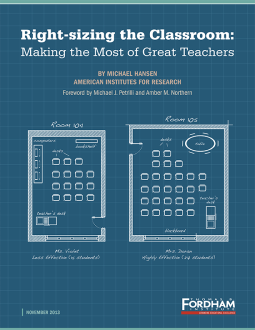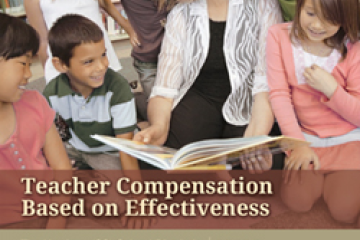In the overwhelming majority of American classrooms, pupils are divided roughly equally among teachers of the same grade in the same school. Parceling them out uniformly is viewed as fair to teachers—and doing otherwise might be seen as unfair. Parents might wonder, too. But what if more students were assigned to the most effective teachers, leaving fewer in classrooms presided over by weaker instructors? What would be the impact of such a practice on student achievement?
That’s the intriguing question that Right-sizing the Classroom: Making the Most of Great Teachers tackles. The idea is straightforward: Give the better teachers more kids and weaker teachers fewer—then see what happens. It’s a common-sense option with many supporters (including Arne Duncan, Bill Gates, sundry wonks, most parents, even teachers themselves).
Using data from North Carolina, economist Michael Hansen, senior researcher at the American Institutes for Research, looks at what right-sizing the classroom can mean for academic achievement. His results, in brief: As the best teachers teach larger classes and the weakest teachers progressively smaller ones, the net result is improved student learning—for all students, not just those who moved.
At the eighth-grade level
- Assigning up to twelve more students than average to effective teachers can produce gains equivalent to adding two-and-a-half extra weeks of school;
- Three-quarters of the potential gain (from moving twelve students) can be realized by moving just six;
- Moving a handful of students to the most effective teachers is comparable to the gains we’d see by removing the lowest 5 percent of teachers.
There are gains at the fifth-grade level, too, though not so large.




